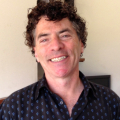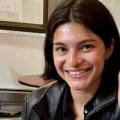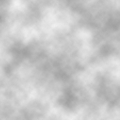Creativity
One of the greatest of all human abilities is its capacity for creative innovation. The lab has examined creativity from a number of different perspectives. In a recent study, we have examined the relationship between creativity and mind wandering (Baird, Smallwood, Mrazek, Franklin, & Schooler, 2012). In this study, participants attempted to come up with alternative uses for common objects (a standard measure of creativity) and then, following various intervening tasks, attempted to generate yet more uses. We found that an activity that encourages mind-wandering, (i.e. a non-demanding task) led to more creative solutions on the second attempt than situations that did not allow for mind-wandering (i.e. no incubation interval or engaging in a demanding task). Strikingly, engaging in a non-demanding task was even better than doing nothing at all with respect to the benefit of the incubation period. Collectively these findings suggest that mind-wandering during non-demanding tasks may be a particularly fertile source of creative inspiration.
The relationship between mindfulness, mind wandering and creativity was further investigated in one of the labs most recent studies (Zedelius & Schooler, 2015). This study revealed that different styles of creative problem solving are facilitated by different modes of thinking. Mindfulness was related to analytic strategies for problem solving while mind wandering may result in greater creative problems solved through insight, or through a sudden “Aha!” moment.
Other areas of research on creativity have included: the impact of thinking out loud on disrupting creative insights (Schooler, Ohlson and Brooks, 1993; Schooler & Melcher, 1995); individual differences in creativity (Schooler & Melcher, 1995), the role of the right hemisphere in creative processes (Fiore & Schooler, 1997), and the relationship between insight processes and perception (Schooler & Melcher, 1995; Schooler, Fallshore, & Fiore 1994)
Related Questions
News
- Time Magazine Feature: Why You Get Your Best Ideas in the Shower
- Advancing Creativity with Cutting-Edge Research
- UCSB Feature: In Search of the Origin of Insight
- A Curiosity Practice Bonanza!
- Templeton Grant Feature: Curiosity has Two Faces
- The Common Creatives Talk Mind "Wondering" with Dr. Schooler
- APS: If You’d Love to Create Something, Let It Go
- The Daily Beast: New Brain Science Shows Us a Sinister Effect of an Idle Mind
- National Geographic: The science of why you have great ideas in the shower
- APA Cover Story: The science behind creativity
- Mind Wandering Can Yield Breakthroughs
- How to hack your unconscious… to find your inner creativity
- Writer's block? Happiness research says this could be the key to creativity
- The Eureka Factor
- 9 Ways To Be More Creative
- Breathing In vs Spacing Out
- Daydream believer: Is a wandering mind a creative mind?
- BBC Special The Creative Brain: How Insight Works
- The Best-Kept Secrets to Exceptional Productivity
Selected Publications
- What types of daydreaming predict creativity? Laboratory and experience sampling evidence.
- Jumping about: the role of mind-wandering and attentional flexibility in facilitating creative problem-solving
- Why creatives don’t find the oddball odd: Neural and psychological evidence for atypical salience processing
- Standing out: An atypical salience account of creativity
- Mind Wondering: Curious Daydreaming and Other Potentially Inspiring Forms of Mind-Wandering
- Back to the basics: Abstract painting as an index of creativity
- Insight and the selection of ideas
- Can Viewing Films Promote Creative Thinking Styles? Examining The Complex Roles of Personality and Meaning-Making
- Irrelevant insights make worldviews ring true
- LSD and creativity: Increased novelty and symbolic thinking, decreased utility and convergent thinking
- Getting a grip on insight: real-time and embodied Aha experiences predict correct solutions
- Is perception the missing link between creativity, curiosity and schizotypy? Evidence from spontaneous eye-movements and responses to auditory oddball stimuli.
- When the Muses Strike: Creative Ideas of Physicists and Writers Routinely Occur During Mind Wandering
- Inspired by Distraction Mind Wandering Facilitates Creative Incubation
- Creativity and Bipolar Disorder: Touched by Fire or Burning with Questions?
- Process mapping and shared cognition: Teamwork and the development of shared problem models
- Mind wandering “Ahas” versus mindful reasoning: alternative routes to creative solutions
- Right hemisphere contributions to creative problem solving: Converging evidence for divergent thinking
- The Richness of Inner Experience: Relating Styles of Daydreaming to Creative Processes.
- Capturing the dynamics of creative daydreaming
- Cultivating an understanding of curiosity as a seed for creativity
- Why creativity is not like the proverbial typing monkey







